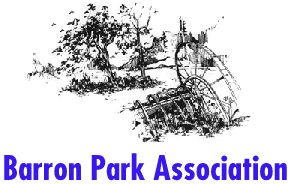

Emergency Preparedness and
Response in Palo Alto
In this article, I shall identify and give an overview of some of the
entities in Palo Alto that deal with emergency preparedness and
emergency response. This overview is not encyclopedic and the
treatment is inevitably uneven. It draws primarily on my personal
experience and interactions this past year as the BPA Board member
focusing on emergency preparedness.
I shall also define and explain some of the many acronyms that float
through this business.
Office of Emergency Services
Emergency activities of the OES will follow the Palo Alto Emergency
Management Plan, a huge and detailed document available at . The Emergency Operations Center (EOC), located in
a dedicated facility in the basement of the Palo Alto City Hall, will
be activated in an emergency under the Incident Command System (ICS).
The City Manager (Frank Benest) has the authority to declare a Local
Emergency and to make a Disaster Designation. He (or his designate,
if he is not available) appoints the Director of the EOC; depending
on the incident, this person could come from the Fire Department, the
Police Department, or Public Works. Activities of the EOC during the
emergency are divided into Operations (Law Enforcement, Fire and
Rescue, Public Works, Utilities, and Care and Shelter), Planning and
Intelligence (Situation Status, and Resource Status) Logistics
(Supply, Communications, Transportation and Personnel), and Finances
and Administration (Cost, Time and Claims).
Palo Alto OES also maintains a flood-information page
()
and a page giving
real-time creek levels for sites on San Francisquito, Matadero and
Adobe Creeks ().
City-Wide Training Exercises
PANDA
PANDA consists of Palo Alto citizen volunteers who have undergone a
training program in emergency disaster assistance and are prepared to
supplement the activities of City personnel during an emergency. This
training includes:
PANDA's can draw on dedicated caches of emergency equipment in
trailers at each of the six city fire stations. Each trailer is also
equipped with an amateur (HAM) radio for emergency communications
with the EOC and with other PANDA trailers.
PANDA training involves six evening sessions and an all-day Saturday
session. If you would like to become a PANDA, contact Barbara Cimino
at Palo Alto OES (650-617-3197).
Community Disaster Preparedness Meetings.
In a major emergency, Palo Alto must coordinate with other entities,
both governmental (neighboring cities, Santa Clara County, the State
of California, and the Federal Emergency Management Agency) and
non-governmental (e.g., the Red Cross, Stanford Hospital, Stanford
University, Stanford Shopping Center, Palo Alto Unified School
District, Avenidas, Palo Alto Community Child Care, the VA hospitals,
and major employers). To enhance this coordination, the City
Manager's Office hosts quarterly Community Disaster Preparedness
Meetings to coordinate the emergency plans of these entities and to
address specific topics such as communications, evacuation and
prioritizing resources. Two neighborhood associations (Barron Park
and Midtown) participate in this group. The meetings are chaired by
Chris Mogensen.
ARES/RACES
Forgetting about the bureaucratic alphabet soup, the salient fact is
that the amateur radio operators under either ARES or RACES provide
critical communication services during emergencies, when telephones,
cell phones and other normal means of communication are inoperative.
ARES radio operators also provide important community service at
planned events such as air shows, parades, fairs and bike rides.
Red Cross
By Patrick Muffler
The Palo Alto Office of Emergency Services (OES) is organizationally
under the Palo Alto Fire Department but works in close coordination
with other city departments, in particular the Police Department,
Public Utilities, and Public Works. Day-to-day OES activities are
directed by the Disaster Coordinator, Barbara Cimino.
The City of Palo Alto recognizes that an Emergency Plan is an
essential, but not sufficient, part of emergency response. City
personnel must be trained in their possible roles in an emergency,
and City departments must practice working together in emergency
situations. Accordingly, Palo Alto carries out realistic training
exercises in which the Fire Department, Police Department, Public
Works, and Public Utilities respond to simulated disasters. The most
recent of these, held in October 2003, simulated response to a
terrorist attack on a business.
An important activity of the Palo Alto OES is the Palo Alto
Neighborhood Disaster Activity (PANDA), a program designed to assist
the OES and the Fire Department in a major disaster. In such an
event, City personnel on duty inevitably must focus on the major
facilities (e.g., Stanford Hospital). Realistically, individual
dwellings in residential neighborhoods will have to be on their own,
at least for 72 hours. A major earthquake, particularly on the
Hayward fault, may well make freeways and bridges impassable for many
days, preventing Fire and Police personnel who are off-duty to even
reach Palo Alto (many live far away). In such a scenario, this 72
hours may lengthen into a week or more.
The Amateur Radio Emergency Services (ARES) handles communications
during emergencies that are not yet declared as a formal disaster.
Once a flood, earthquake, fire, etc., is declared a formal disaster,
this communication role shifts to the Radio Amateur Civil Emergency
Services (RACES), the communication branch of the Federal Emergency
Management Agency (FEMA). In Santa Clara County, these two amateur
radio functions have been joined since 1978 (), and most amateur radio operators are members of both
ARES and RACES. The distinction between ARES and RACES in most cases
is legal, primarily having to do with what entity insures the
operators.
In any disaster, the American Red Cross is a major contributor,
providing shelter, food, medical care and mental health services, as
well as assistance to help victims resume independent living. The Red
Cross also provides education in first aid, disaster preparedness,
disaster service functions, and training for Red Cross Disaster
Volunteers. In addition, the Red Cross has an outreach program for
personal and family preparation, sponsoring emergency-preparedness
fairs, selling emergency-preparedness kits, and developing family
disaster plans. The Palo Alto Chapter of the American Red Cross has a
superb web site at
that presents an enormous amount of information. Notable is the
on-line store for purchase of emergency-preparedness and first-aid
kits ().